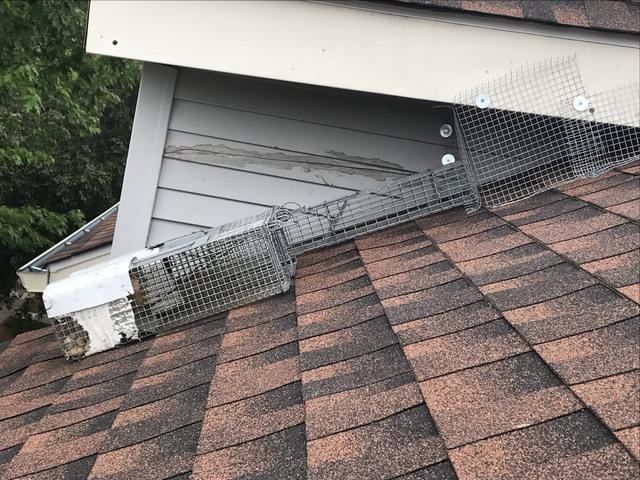Dormer creates wildlife trapping challenge in Sayreville, NJ
Challenge
Many two-story homes, like this Cape Cod-style home in South River, NJ with their gabled roofs, aren’t a full two stories. The upstairs rooms are tucked under the slope of the roof. Also, homeowners cramped for space often think about turning an unfinished attic into usable living space. There are two major problems with these upper-level spaces (besides it getting unbearably hot in the summer): dim lighting and not enough headroom. One option — raising the entire roof — is an expensive proposition. The more common, easier building solution is to add one or more “dormers” to those spaces in order to expand headroom and improve lighting. Dormers are simply projections or extensions built onto the roof. They raise only a portion of the roof, so that only those spaces that will be used extensively benefit from the added height. For homeowners looking to renovate, Dormers are a more modest way of creating additional space. They also provide a wall for windows to let in more sunlight.
When a house has dormers, the projection creates an area where the roof meets the soffit and forms a sideways "V" shape that, if you remember middle school math, looks just that the greater than inequality symbol (”>”). Some wildlife technicians call it the "Pacman" after the devouring character in the video game. These areas on roofs have developed quite a reputation with wildlife techs, and not in a good way. These areas are notorious access points for wildlife with advanced climbing skills that can reach roofs with ease, especially squirrels and raccoons.
The angle created makes it difficult to secure and seal the soffit well during construction. Animals have a knack for finding the weakest link into a home, and they’ll focus on this area, manipulating it either by pulling and pushing on it, or just chewing a hole in the soft vinyl soffit to rip open the seam. Before you know it, they made there way inside where they’ll wreck havoc, chewing on building materials and depositing their wastes everywhere.
Dormers not only present challenges for those in construction. They also present challenges for wildlife technicians tasked with trapping and evicting animals that have taken a liking to your home. With this particular home in , I was dealing with a fairly wide soffit that had been exploited by squirrels.
I also knew that I was also we dealing with juvenile squirrel, because I came across one of them them during my attic inspection. Baby squirrels are born blind, deaf, and totally helpless. They remain in the nest until they are independent. Weaning takes anywhere from two to two and one-half months. Once weaned, they will remain with mother until they can learn all the skills that they need in order to survive on their own. These "juveniles" were active and out of the nest when I saw them, but they had lived a sheltered life. They were however born in the attic and had never ventured outside
Solution
In this situation, I wanted to use a multi-catch instead of a one-way exclusion device. The idea behind the multi-catch is to trap an entire happy wildlife family together. A one-way simply gets the animals outside without allowing them return access, and once outside, the animals are on their own. The juvenile squirrels are not ready to go out on their own. With a multi-catch device, you get the mother squirrel into the cage, and her young will then follow her in after they hear her. We use the mother as bait to trap her young.
I also set two traps right next to the multi-catch setup, just in case the mother was not inside the attic when I set it up. Once she realizes she can't get back inside, there's a good chance she will go after the peanuts in the trap. Once trapped, her young will still hear her, wander out, and get trapped themselves. With this set up, I’m confident that I’ll humanely catch the entire squirrel family and be able to relocate them away from this home.




